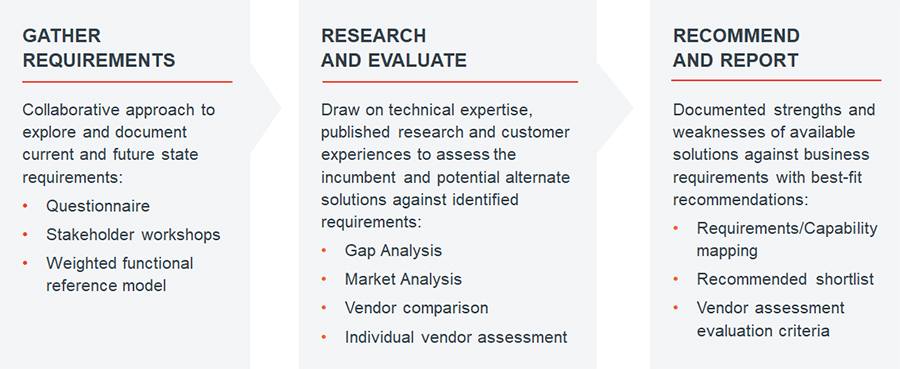As daunting as the prospect may be, there are some triggers that mean transitioning your EAM or ERP systems is inevitable. Although no small undertaking, this can also be an opportunity - to simplify and centralise, harness the benefits of the cloud and equip your business to develop the capabilities needed to survive and thrive into the future.
Planning and executing an EAM/ERP transformation can take time. When the need for change is looming, leaving it to the last minute simply isn’t an option. Before undertaking a transformation project, COSOL recommends an independent review to assess the current systems environment and business needs, identify best-of-breed systems and illuminate the options that will help you achieve your asset management goals.
In this article:
- we look at some of the drivers for change,
- weigh up the balance of challenge and opportunity, and
- identify the steps to a successful EAM/ERP transformation.
Business needs (and enterprise systems) grow and evolve over time.
Asset-intensive businesses are in the grip of the 4th Industrial Revolution, in which technological advances are pushing innovation and digital transformation to the next level. In turn, the business applications employed to support asset operations are also evolving as vendors invest in bolstering, augmenting and, in some cases, completely re-engineering their products.
In this environment, the most common drivers or change include:
- Software end-of-life – vendor-led requirement caused by the significant re-design or withdrawal of your incumbent system from the market.
- Developing new capabilities – improving usability, mobility or providing access to new features and functions that better support asset operations.
- Modernise legacy applications – centralise, simplify and modernise ageing technologies or platforms.
Challenge or Opportunity?
When the need to change is driven by forces outside your control - like the significant reengineering of a critical business system with a looming end-of-life deadline on past versions - navigating the transformation landscape may feel like an unwanted distraction from business priorities. However, it can also be a timely opportunity for organisations to review their functional and operational requirements to ensure they continue to invest in the right tools to meet their current and forecast needs.
Contemplating major change to mission critical business systems is no small undertaking, but it presents huge opportunities.
For example, by considering an ‘as a Service’ cloud platform instead of a traditional on-premises deployment, organisations can break the capital-intensive software upgrade project cycle and support their operations with technologies that are always up-to-date and proactively managed. COSOL’s Enterprise Asset Management as a Service (EAMaaS) is one such solution, offering:
- Lower cost of entry
- Faster time to value
- Reduced ongoing cost
- Applications accessible from anywhere
- Superior security
- Reliability and performance.
COSOL's EAMaaS is built using IBM’s Maximo Application Suite (MAS), a powerful, integrated cloud-based platform that uses AI, IoT and analytics to improve asset performance. IBM MAS offers users a range of asset management capabilities for asset monitoring, management, predictive maintenance and reliability planning with EAM and APM services integrated into a single platform.
Steps to successful outcomes
When the time for change has come, your organisation shouldn't underestimate how long it can take to assess your EAM/ERP objectives and requirements, select a vendor and successfully upgrade your system or transition to a new one.
Consideration needs to be given to what success looks like. Is your aim to increase efficiency, deliver improved reporting, or provide better scalability? A functional assessment will need to be carried out to determine what your needs are – and how they can be met. Starting early will give you the luxury of time to narrow the field of potential vendors and adequately engage with stakeholders across the organisation to capture requirements in their entirety and garner support for the project and its outcomes.
Replacing or transforming enterprise systems typically requires the following steps, which can span years rather than weeks or months:
- Assessment & evaluation
Begin by evaluating your current system’s performance and limitations. Understand why you need to act and determine the gaps between where you are now, and where you need to be. - Set clear objectives
Consider what you want to achieve, such as increased eficiency, improved reporting or scalability. Prioritise those changes you consider to be mandatory versus ‘nice to have’. - Vendor selection & evaluation
Research and evaluate potential solutions. Consider required features and functions, but also the vendor’s aility to deliver ongoing product innovation and active support. - Budget & resourcing
Assess your budget for the transformation project and allocate resources, including personnel and external consultants if necessary. Don’t forget to factor in change management and ongoing support resources. - Data migration
Develop a data migration strategy to transfer data from the old system to the new one. Ensure data accuracy and consistency during the migration process. - Implementation
Roll out the new enterprise system gradually or all at once, depending on your organisation's size and complexity. Monitor progress and address any issues that may arise.
Understand business needs and the solutions that represent the best-fit
Conducting an EAM/ERP Market Assessment provides an objective and structured approach to reviewing the strengths and weaknesses of your current environment, gathering and prioritising business requirements, evaluating commercially available solutions against those requirements and identifying best-fit solutions.

COSOL employs collaborative consultation and structured analysis to assist clients select fit-for-purpose EAM and ERP solutions
Identifying the strengths and weaknesses of the present environment will be particularly valuable for organisations facing an upgrade to a significantly re-engineered version of their incumbent system. Although an industry ready version of the new version may not yet be ready to be incorporated in any assessment of capabilities, understanding the gaps between current and desired future state will be a valuable decision making tool as any end of support deadline approaches.
It’s also important to note that the outcome of this assessment is not necessarily a large rip-and-replace project. Past EAM/ERP Market Assessments have identified capabilities within the incumbent system that could be better utilised to meet current and projected business requirements.
COSOL clients keen to understand where the roadmap for incumbent EAM and ERP solutions will take them, should contact our specialist team to request an EAM/ERP Market Assessment.
Download our guide 'Is now the time to rethink your Enterprise Systems?'
This digital eBook will help goes further into the drivers for change and preparing for successful a EAM/ERP transformation.

